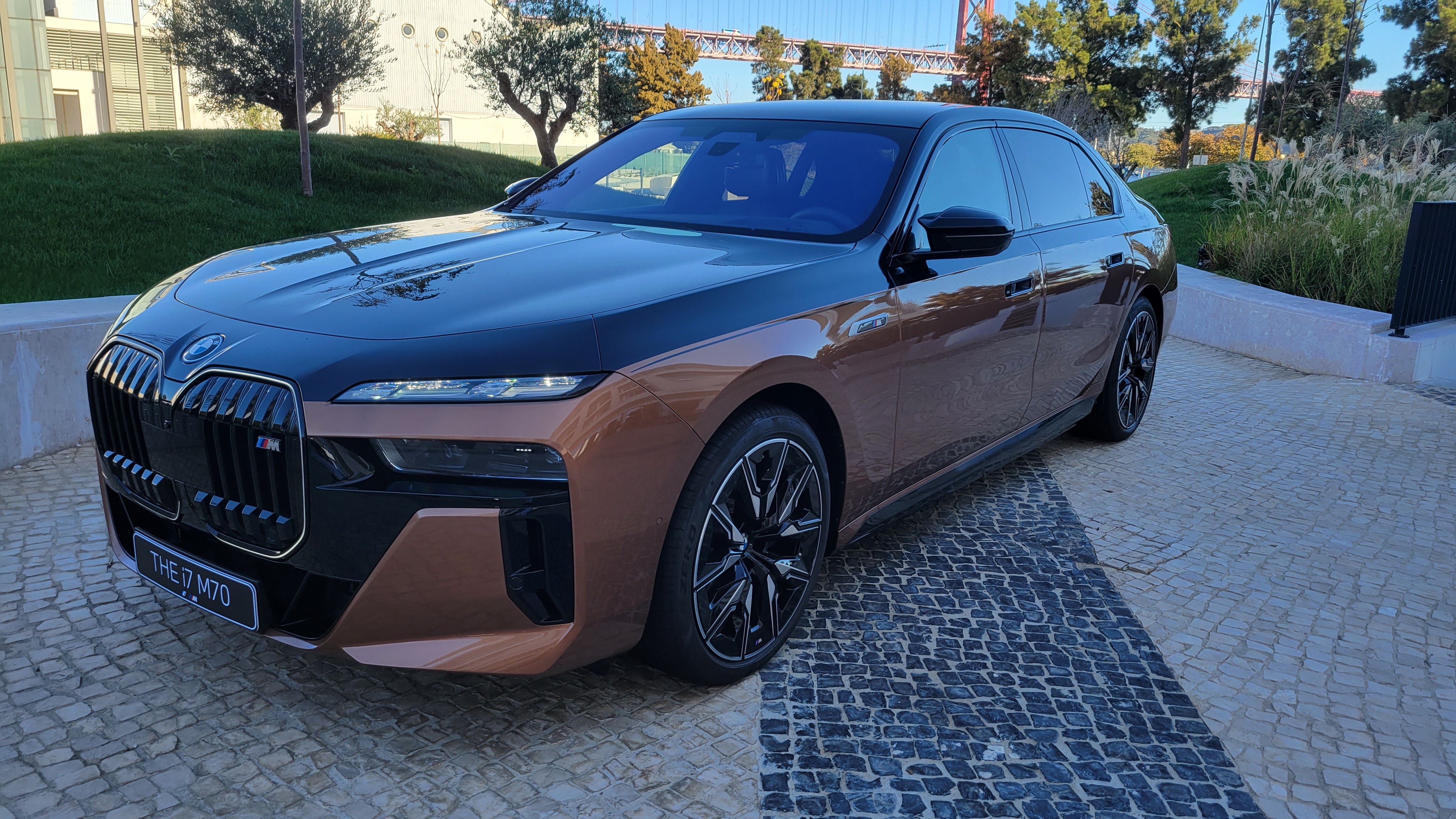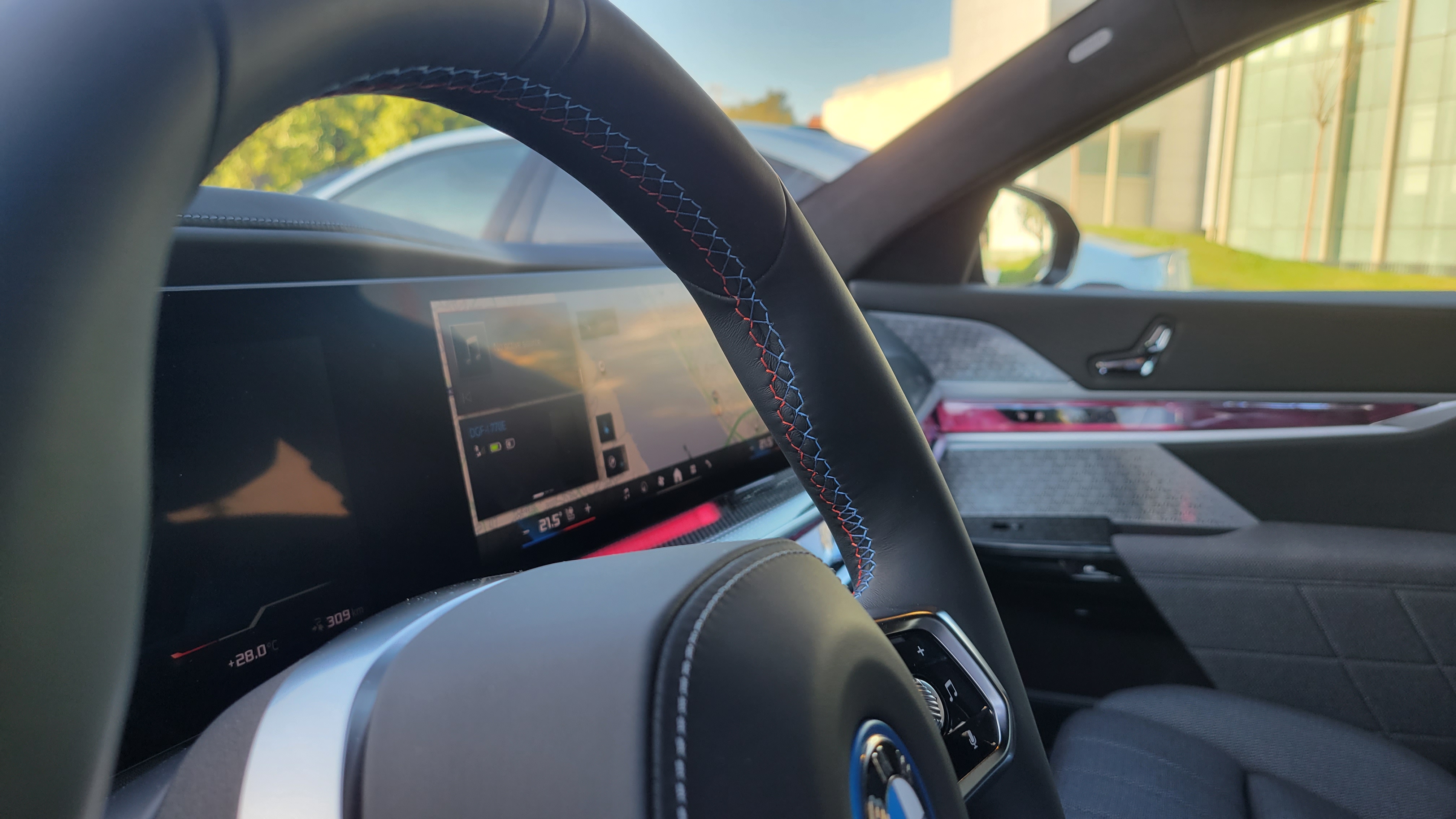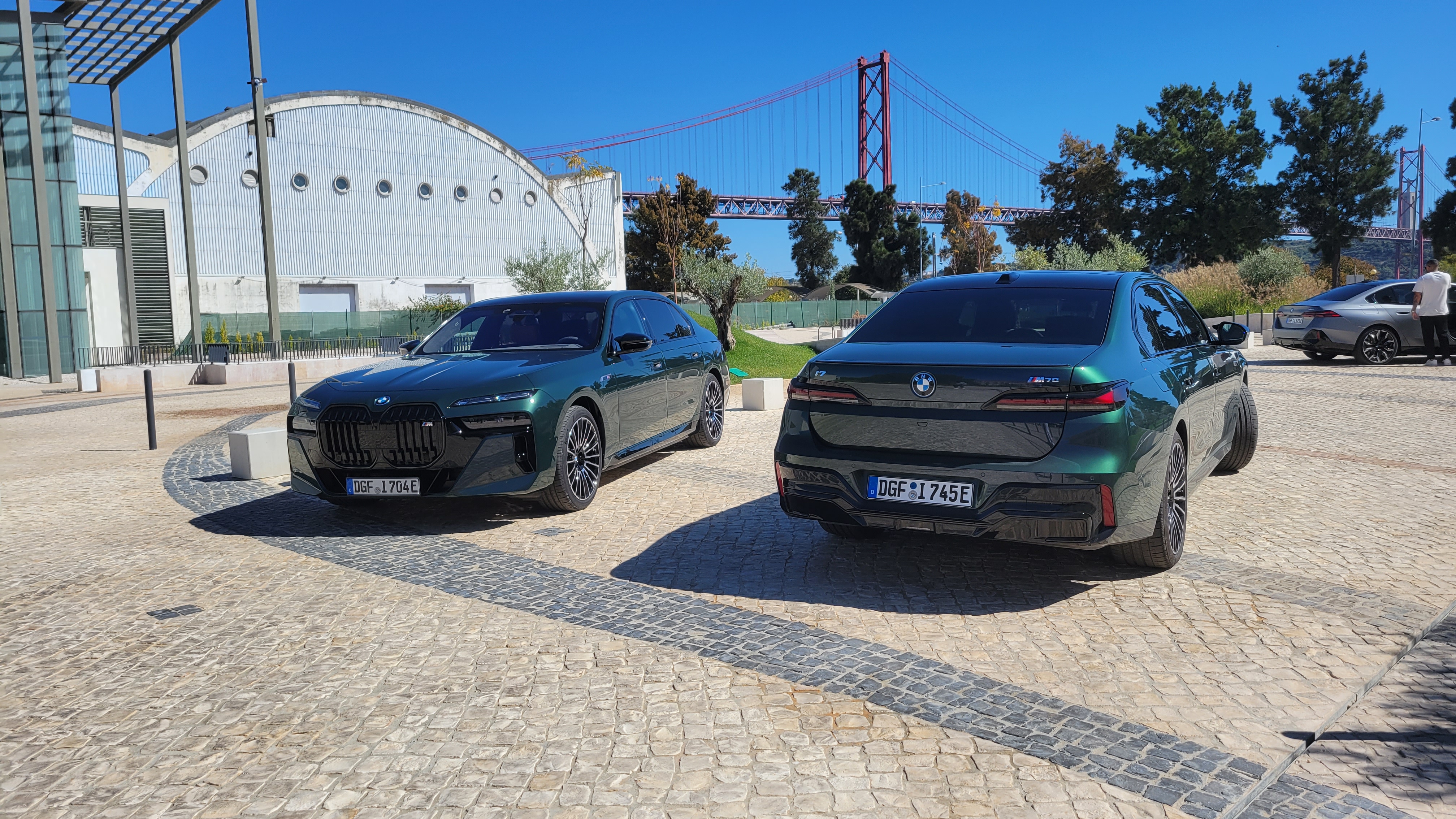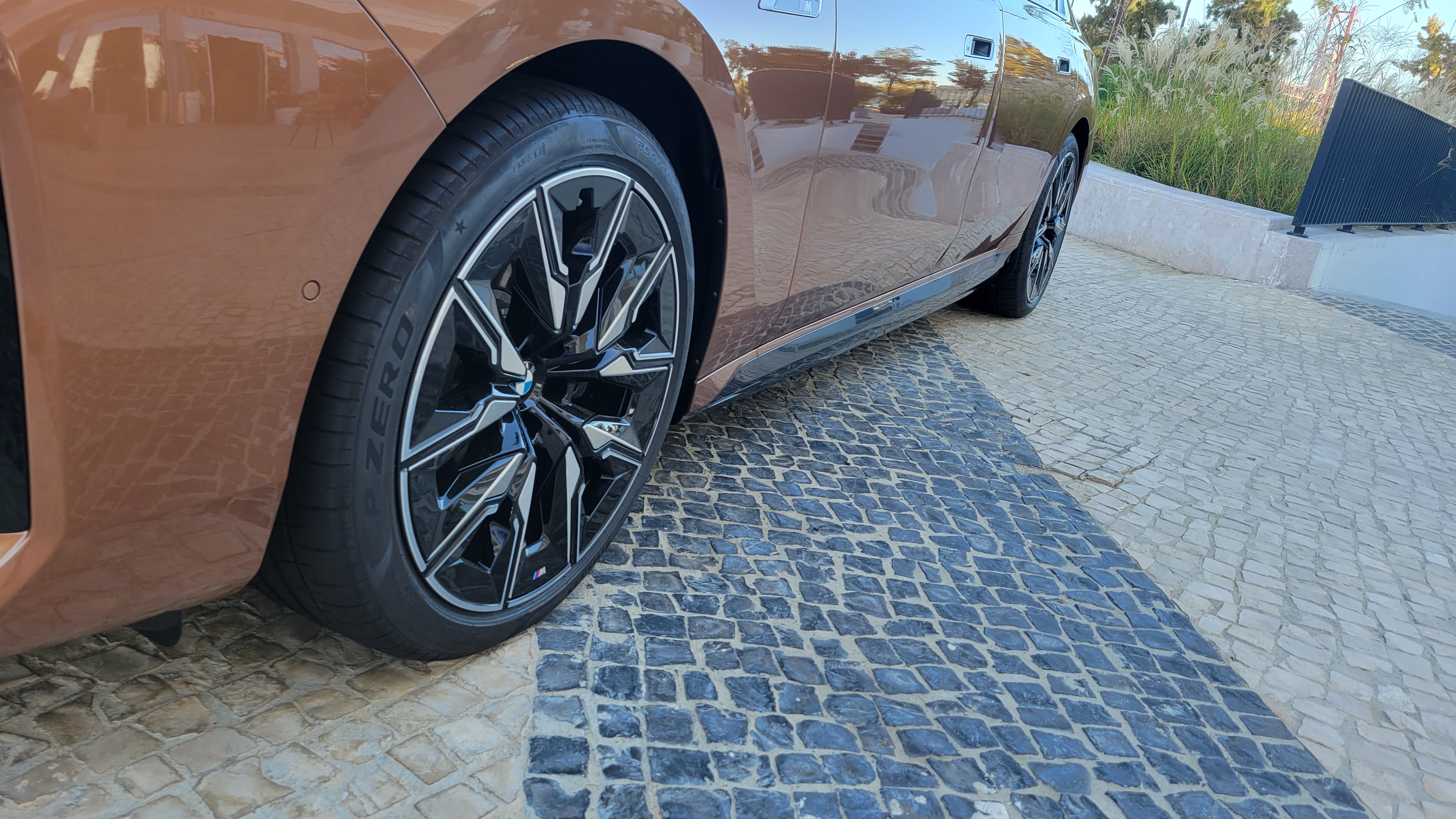
BMW’s flagship EV, the i7, hit the road last year. While the luxury EV broke plenty of boundaries, both in terms of performance and comfort, many people were left wondering when it would inevitably get its “M” package. Well, those people got their wish in April, and we recently went hands-on with one to see just how much of a difference the motorsport package makes to what is BMW’s most luxurious vehicle.
On paper, it should be mind-blowing. The all-wheel-drive i7 M70 xDrive (to give it its full title) has two powerful motors driving its wheels. The motor at the back is the most powerful unit BMW has ever produced at 483 horsepower. Combined with the front motor, i7 M70 xDrive lays down a total of 650 horsepower, making it the most powerful battery electric vehicle (BEV) the German company currently has on the market. But cars aren’t driven on paper, so let’s see how that actually transfers to the road.
The ‘M’ styling is a little toned-down
There are two types of people who pay up for an M package on a BMW. First, there are the actual motor sport enthusiasts who want to maximize the performance of their otherwise businesslike sedan. The upgrade gives them more of an opportunity to let the leash off and have fun with their vehicle. Then there are the people who pick the package so everyone knows they dropped an extra $20,000 or so on their luxury motor.

People in the latter camp may be disappointed by the interior choices on several of the i7 M70s. They’re not as “in your face” as M packages have historically been. You get a unique display on the infotainment system, and if you look very closely at the inside of the steering wheel, the stitching is in M colors. The seat belts are stripe-free, and unless you really pay attention, you may struggle to differentiate it from a standard i7 in terms of looks.
Externally, things are a little more noticeable. You’ll get the M badge on the front and back of the vehicle, plus a few unique trim elements, such as a unique splitter at the back. At the front, the kidney grille now has a glowing outline with the M-package, though stylistically, this may divide opinion somewhat.
The standard i7 is more than good enough
Opting for an M package on a 7 Series was arguably always an odd choice. While performance is a factor with all BMWs, the 7 was always a luxury option. You’re supposed to be smoothly and comfortably gliding along the road in one, not throwing it into corners. With the i7, it makes even less sense.

The performance of the standard, non-M vehicles is already phenomenal. The i7 xDrive60, to give it its full title, has 536 horsepower and can rocket from 0 to 60 in as little as 4.5 seconds. Even the cheaper i7 eDrive 50 isn’t sluggish, rocking 449 horsepower and only adding 0.8 seconds to the all-wheel drive version’s 0-to-60 time. The lack of all-wheel drive on that version will probably be the most notable omission.
You’re unlikely to notice a huge difference in performance with most regular use, and that may leave you wondering where the extra money went. This contrasts with other “M” versions of vehicles, including the upcoming i5 M60, which feel noticeably different on the road.
Handling and boost are what sets The M70 xDrive apart
While you may not notice much of a difference between the M70 and standard i7 in daily use, there are a couple of areas where it manages to stand out. All-wheel steering is a big addition, and long, large vehicles like the i7 are ideal candidates for it. Although the rear-axle steering system only shifts the wheels around 2.5 degrees, it makes a pretty big difference in practice.
The i7 M70 has a turning circle of just 40.3 feet, which is a tenth-of-a-foot better than the traditionally sportier standard 5 Series. Add in the various sensors and other driver’s aids, and maneuvering the electric 7 series through tight parking garages and car-unfriendly city streets becomes far less difficult.

Then there’s the M-Boost tab to the left of the steering wheel. This little fun switch allows you to unleash the full potential of the most powerful electric motor BMW has ever produced. You can only do so in short bursts, but it’s another feature that makes the luxury vehicle feel like a far sportier car than it has any right to be. At its best, the i7 M70 will go from 0 to 60 in just 3.5 seconds, which means you’re getting supercar speeds from a large, heavy, limousine.
With the standard i7, you may not want to spend much time in the driver’s seat. The massage seats, “cinema mode,” and top-tier suspension means you’re better off relaxing in the rear than you are sitting upfront. But the M package may just be that missing element the front seat needs to compete. With the M70, you still have everything that makes the regular i7 great, but there’s also a chance of some fun permeating through the professionalism — when the circumstances are right, anyway.



